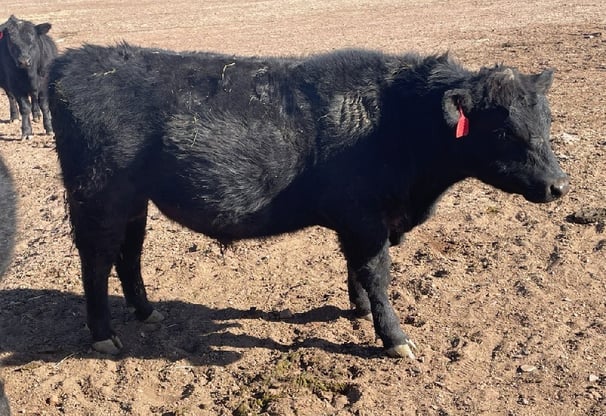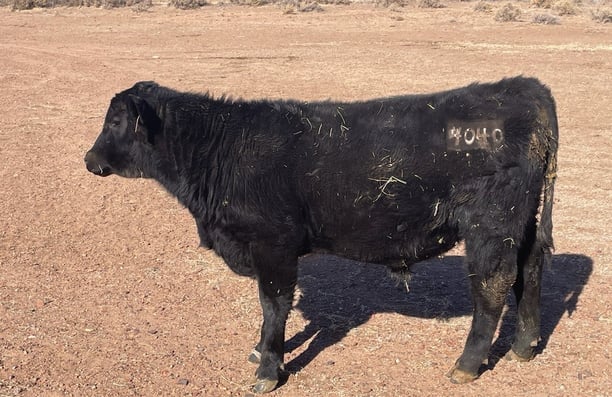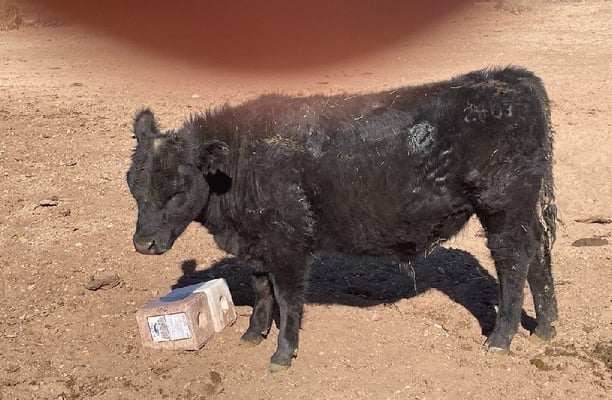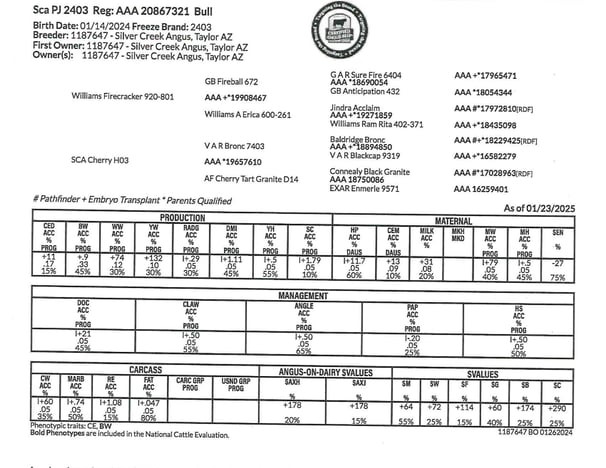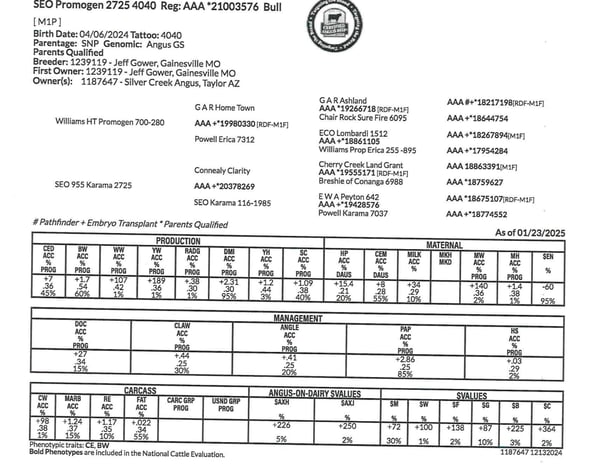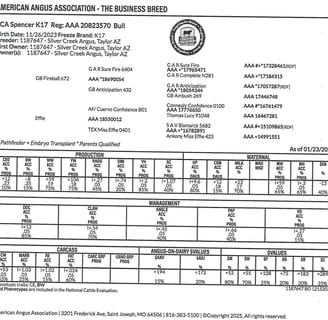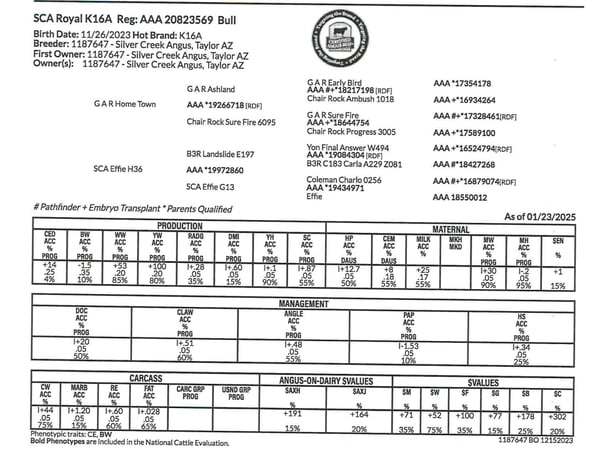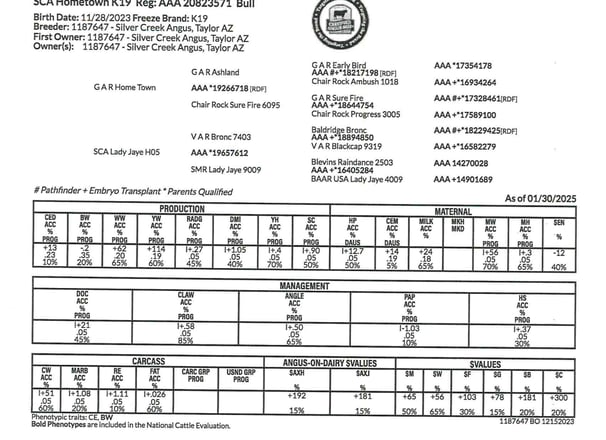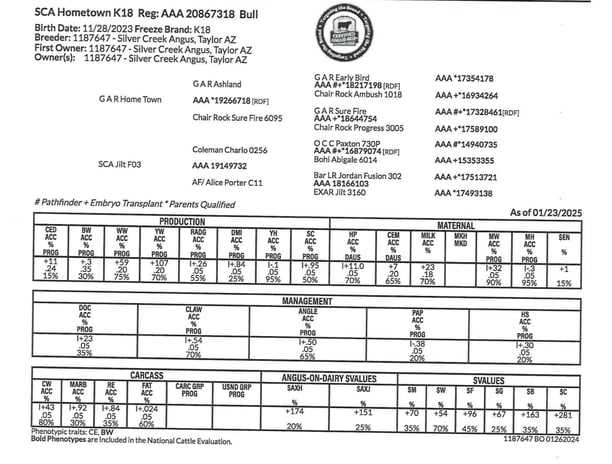Add your promotional text...
Currently For Sale
Yearling Registered angus bulls for sale 2025
Our Philosophy of bull development:
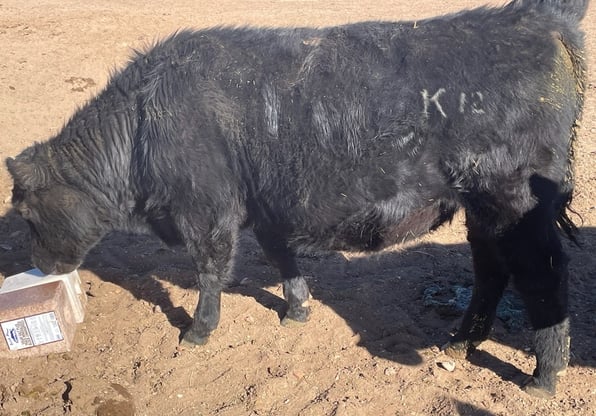

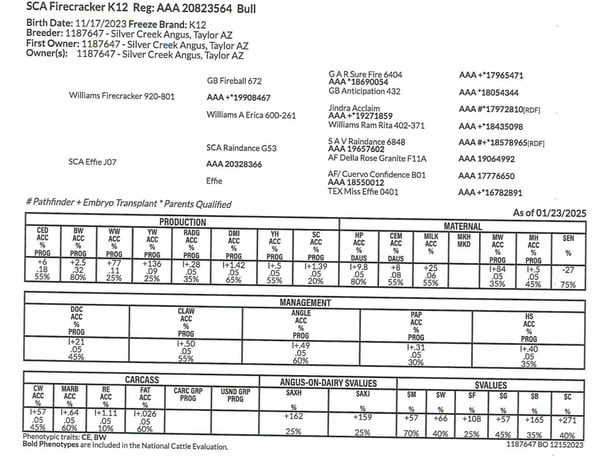

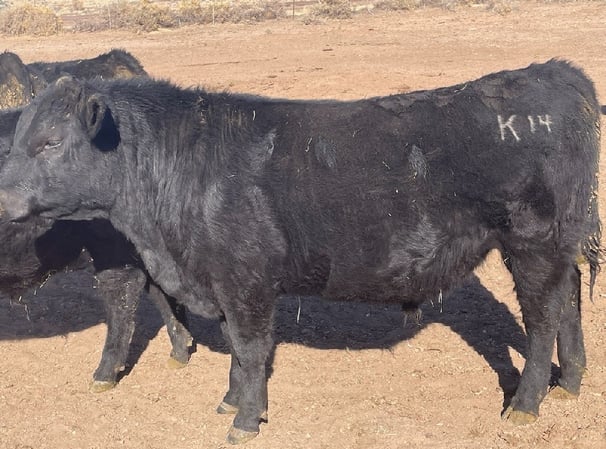

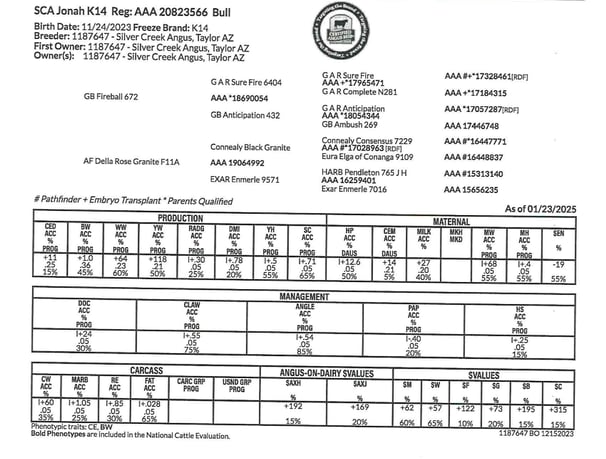

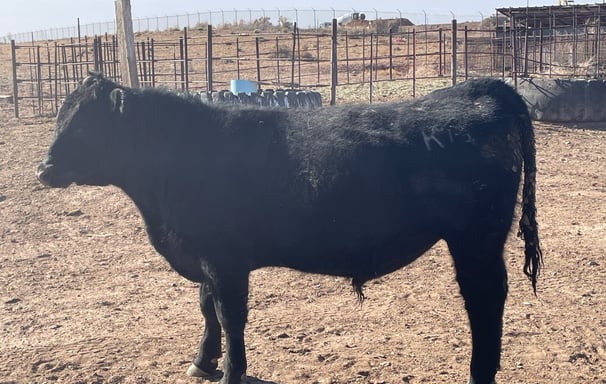

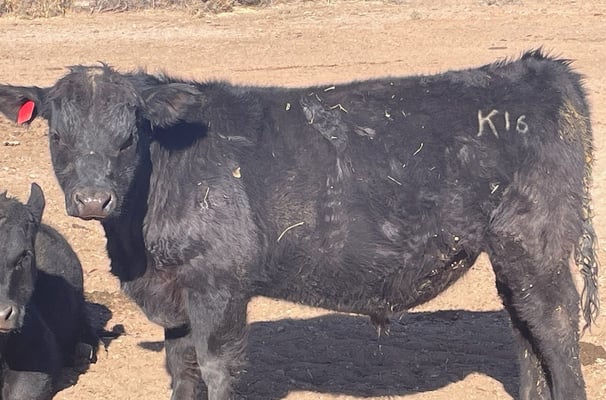

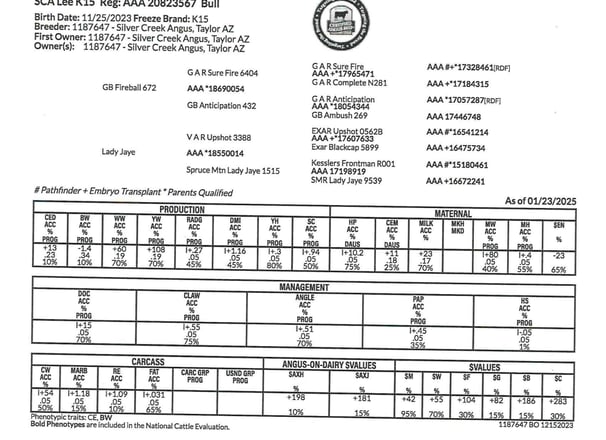

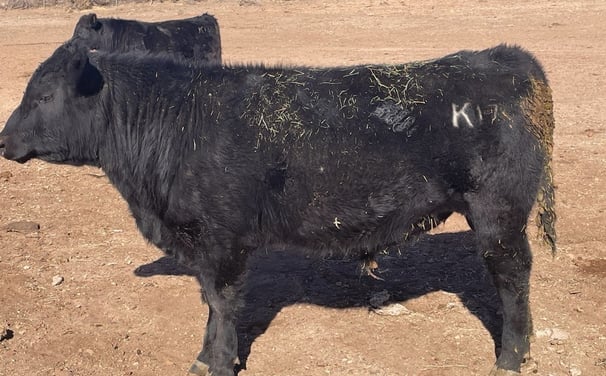

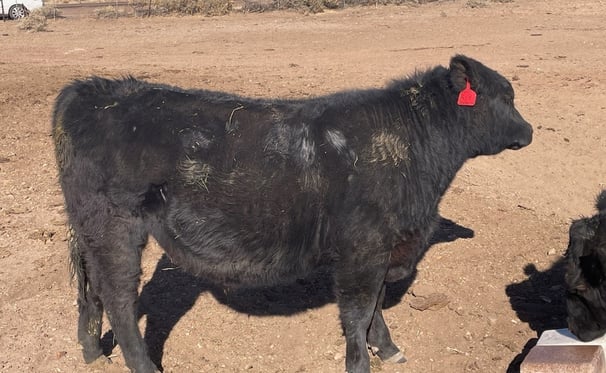

Over conditioned bulls cost you twice, once when you buy them, and then again when they are not fertile, and don't hold up under normal working conditions.
How does this happen? Most bulls are developed at feed yards (small pens unable to get exercise), fed high corn, low ruffage diets, making them fat and lethargic. What are the outcomes of over conditioned bulls during breeding season? 1) Increase of osteochondritis dissecans, degenerative joint disease, health problems, and soundness issues. The take home message - the bull cannot get to and from water and feed, much less breed the cows. 2) Fat impairs testosterone production. 3) Fat is deposited around the testicles insulating the testicles causing sperm to be developmentally impaired causing poor motility sperm quality to become suboptimal. Fat bulls often do not pass breeding soundness exam. 4) Fat bulls' sperm contributes to embryo maturation problems causing miscarriages in early pregnancy, which means your cows will take longer to breed back, also spacing out your calving window, making irregular sizes in your calf crop, and lower prices at sale time. 5) Acidosis occurs in over conditioned bulls on high starch diets causing decreased semen quality and reduced longevity of the bull. The diet the bull was developed on needs to be continued to keep the bull from melting at your ranch, therefore the closer the bull has been fed to what you will feed him at home makes him adapt faster to your environment and have better semen quality. So, if you feed your cows grain then the bull will adjust well to your ranch if not, he will take some time to adapt to your environment, which means calves will be spaced farther out and weights will vary causing the buyers to reduce premiums. It takes 60 days for the bull to produce semen and diet changes may affect the bull's health and semen production. 6) Rumen microbial development is reduced on a high grain diet. Effect the bull is not able to digest and assimilate high ruffage diet like most ranchers depend on to maintain and grow cattle.
How do we manage and develop our bulls? The bulls are weaned and then placed in a 460-acre pasture on native grass, sage, and cedar trees at 5600 feet. The terrain is rocky, and they walk a lot, and their feet are conditioned for heavy use. The diet of the bull development is mineral salt, protein tub, and grass alfalfa mix hay, in addition to the native foraging sources. There is no grain in the diet of these bulls. The rumens of these bulls are well developed, and they will be well prepared to move out onto native pastures. They do grow slower, but they are sound in development, and semen quality passes fertility soundness exam around 12 months of age. We know the genetics are there to produce premium quality offspring from the EPD's, but we have developed the bulls to have soundness, high quality semen, and longevity. The bulls do take more tender loving care in the first breeding season, but all young bulls do. An additional benefit is the bulls do not get so big too quickly, that they start breaking down your heifers and cows. We feel that this strategy pays dividends for the life of the bull and puts extra dollars in your pocket at the end of the day.
